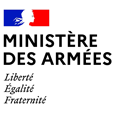The Forces Employment Doctrine Centre (CDEF ) has decided to make available to the public part of the French Army’s official doctrine, with the aim of making this doctrine more well-known. This is in addition to the publication of the general readership journals, “Doctrine Tactique” and “Héraclès”.
This doctrine is shared in order to show how the French Army handles the ever-present issue of adapting to the reality of commitments and their environment, in a context of intense strategic transformation where crises have moved far from the battles between States to the clashes that occur within societies.
This dissemination comes at a time where major internal work is being carried out on doctrine. By incorporating the new parameters of current crises where the French Army is involved, this doctrinal work should help the Army develop its organization, choice of equipment and courses of action, combined with the dual demands of power and control of force.
The dissemination of these documents is destined for those carrying out research and reflection in the field of defense, both in the military and civilian environments, at home and abroad. It is also destined for anyone interested in the current challenges that arise from defense issues in a large country of the European Union.
FT-03 ANG - Employment of Land Forces in Joint Operations. January 2016. In an ever changing operational context, the 2015 version of the DFT 3.2 Volume 1 (FT-03) aims to offer readers engaged in overseas operations or those on the national territory with an up-to-date and clear understanding of the interplay between their own roles and those of all the other stakeholders involved.
PFT 5.3.2 - EMP 50.655 - Handbook on The Protection of Cultural Property in the Event of Armed Conflict. December 2015. PFT 5.3.2 (EMP 50.655) is consistent with the final component of the fundamental doctrine documents for Land Forces, FT-03 , “Employment of Land Forces in Joint Operations”, as well as DIA-01 , published in 2014. The purpose of this publication is to aid the understanding of a military commander’s responsibility to protect cultural property during armed conflict.
FT-05 ANG - The tactical commander's guide to command and control in operations. December 2011. Backed up by historical examples, it is first and foremost intended to provide food for thought for our officers, in particular the youngest of them, but also for each and every commander who may one day be called upon to exercise command and control in operations.This doctrinal manual is part of the ongoing series of ‘Capstone Doctrine' documents of the Army's doctrinal corpus. It is also intended to specify the French approach to operational command in the light of the field manuals and handbooks that our key allies have recently published on the same topic.
FT-04 ANG - Fundamentals of Combined Arms Maneuver. January 2013. Consistent with NATO doctrine, this document is part of national doctrine and lays out the general manner in which the resources of land forces in operations must be combined for coherent employment, depending on the different commitment contexts which can be envisaged today. It excludes missions on the national territory.
FT-02 ANG - General Tactics. July 2010. The global action of land forces is now carried out within a strategic environment that has dramatically changed for 15 years.While the risk of a conventional war has faded away, especially with the overwhelming superiority of western technology, warfighting among populations constitutes, now and for te years to come, the general framework of combat. This predominance of the human environment, together with threats that no longer have any physical borders, unavoidably changes the strategic and tactical expectations of military action.
FT-01 ANG - Winning the Battle, Building Peace. October 2017. As an armed confrontation of wills, war always causes destruction and suffering, but its face and place in the world have changed. At the very heart of these operations, they reach their full potential in the resolution of crises that have strayed from inter state conflict to invest the field of confrontation in the very midst of society. In this new environment, the French Army asserts and implements a double requirement: that of power and the control of force.








